
The long wait to dine at New York's Damon Baehrel
At his eponymous home-restaurant in upstate New York, Damon Baehrel handcrafts most components of his 20-plus-course meal with ingredients from his 12-acre native farm. And he's booked out for years
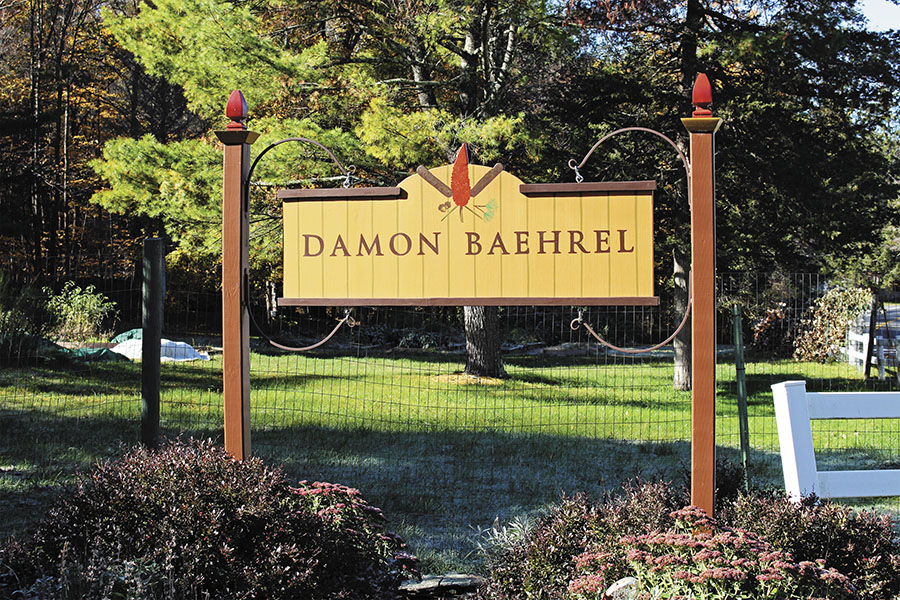 Damon Baehrel’s rural property in upstate New York
Damon Baehrel’s rural property in upstate New York
There is hesitation in Damon Baehrel’s lilting voice when I ask him how he would like to be known: A chef, a farmer, or both? “Umm... that... and a wine specialist, a waiter, a cheese maker, a carpenter, a beekeeper, and a dishwasher, among others,” he says. “I am a pretty good dishwasher, you know. I haven’t broken anything yet. It’s almost therapeutic to do something as mindless as the dishes at the end of the day.”
Baehrel might have a problem of plenty while choosing his designation, but his eponymous restaurant at Earlton, in upstate New York about 220 km north of Manhattan, has received unequivocal acclaim for being one of the most exclusive restaurants in the world. International media reports say you will have to wait till at least 2025 to be able to eat here—you can’t walk in, and all tables are booked till then. In fact, you can’t even send in a reservation request now: Baehrel has stopped taking reservations since March 2014, and is unlikely to resume anytime soon.
Baehrel won’t put a number to pending reservations. He says he doesn’t like numbers; perhaps that’s why he doesn’t reveal his age either, except that he is in his early-50s. In an email he writes that he is frustrated with the media’s obsession with his waiting list. “I will no longer confirm the year we are reserved through,” he says. But he will give out this much: “I possibly couldn’t clear up pending requests if I were to live till 100. Maybe some people will drop out. But even that would leave me with a pretty long back-up list.”
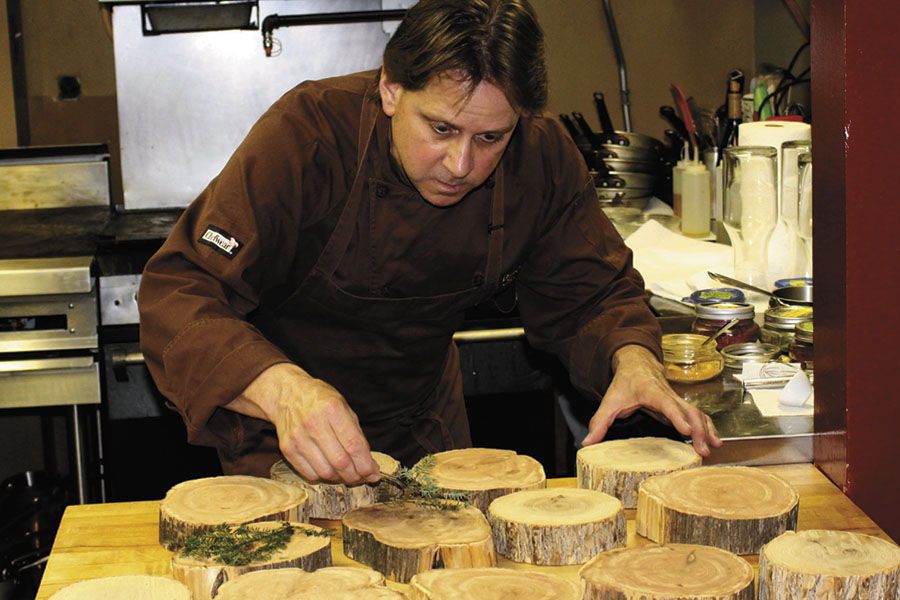
There’s no way that list could move a little faster. Because integral to the Damon Baehrel dining experience is a 20-seater space in the basement of his two-storeyed house where Baehrel entertains guests four days a week (Thursday to Sunday). There are a few out-of-turn seatings about once or twice a month, but that’s mostly on a whim. Baehrel says he dearly wishes he could feed more guests, but is hamstrung by his biggest USP: He is a one-man army who cooks only with ingredients available on his 12-acre native farm. Which means that apart from ingredients like seafood or meat that he sources locally, Baehrel himself makes every single component—flour, seasoning, oil, what have you—he serves on his 20-plus-course menu.
For instance, the flour he churns out from the scruffy inner bark—the cambium layer—of a pine tree. Baehrel has developed a process to harvest the bark, soak it in water and dry it every month for a year before grinding it into flour. Or create pine needle juice, powder and pulp to envelop meat or seafood to preserve them for several weeks to years, eliminating the use of artificial preservatives. He’s taught himself to make cheeses by curdling milk with native plants—like stinging nettles and Japanese knotweed—instead of rennet (an animal enzyme), press oils from acorns and hickory nuts by hand, and substitute sugar in his sweet dishes with tree saps, native fruit juices and herb tea thickened with wild violet leaves and stems. His rich, frothy sauces derive flavour not from butter or cream but from wild chicory or dandelion roots, which he first cooks in a broth made out of young birch branches, and then emulsifies with starch extracted from wild roots.
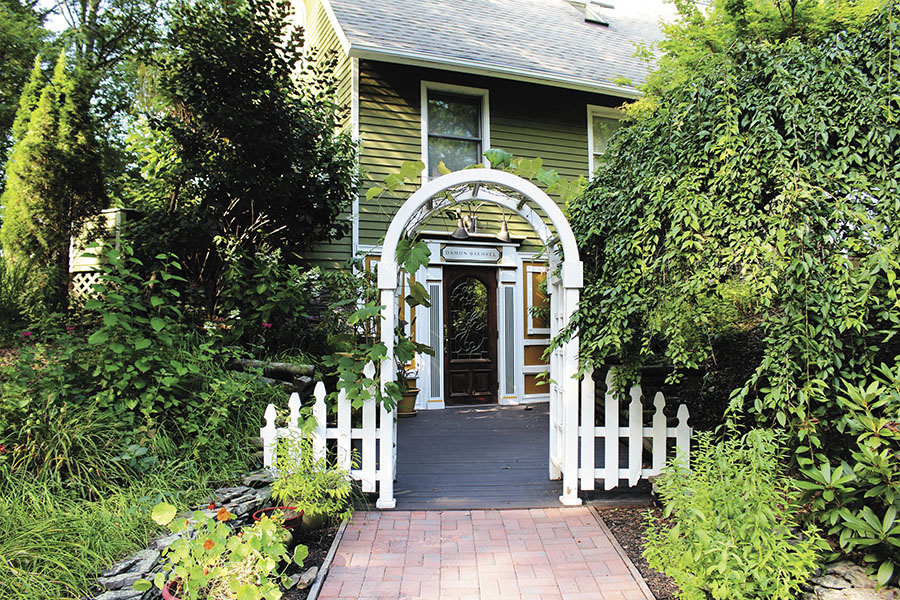
Andy Hayler, a London-based foodie who claims to have eaten in every three-Michelin-star restaurant in 2014, calls it an extreme form of local cooking. Says Baehrel, “What I do at the restaurant is based on native plants. It’s taken me a lifetime to discover what these plants can offer. Even though I came out with a book (Native Harvest) in December, I feel I am only just getting started.”
***
Baehrel’s interest in native plants started when he was young. Born in Massapequa on Long Island, New York, he would pick up the odd plant and go, “Hey Ma, what do you do with this one?” Those weren’t the days of the internet, so his mother would rush to the library and come back with an answer. “By the time I was a teenager, I had a vast knowledge of the plant kingdom. Of course I had no idea what I would do with that knowledge,” he says.
Growing up, Baehrel aspired to be a motorcycle racer, and he became one in his mid-teens, but he also worked part-time at a local restaurant. What started as a back-up career option soon took the front seat when Baehrel realised he could figure his way around the restaurant kitchen really quick. He quit racing at 20, but didn’t stick around at the restaurant for long either. “At that time, senior chefs [at the restaurant where I cooked] didn’t want to teach the young ones. Plus, I was pretty sure I didn’t want to cook any conventional cuisine, like French,” he says. He set up a catering business with wife Elizabeth in his early 20s.
While running this business Baehrel had a flash of insight: He could cook with all that was available on his property. That was the mid-’80s and the world still hadn’t heard of René Redzepi, the master of Nordic cuisine who made foraging fashionable. When Baehrel opened his restaurant in 1989, even his wife thought he had lost his mind. (She now looks after the administration of the restaurant and is a full-time carer for their disabled older son.) Baehrel also received anonymous letters saying guests wouldn’t travel to back-of-beyond Earlton to eat. “It’s funny because, after all these years, people come to my restaurant because of where it is. The location is key to the success of my cooking. It’s remote, and you can see the natural landscape that surrounds us, and that’s what you are eating,” he says.
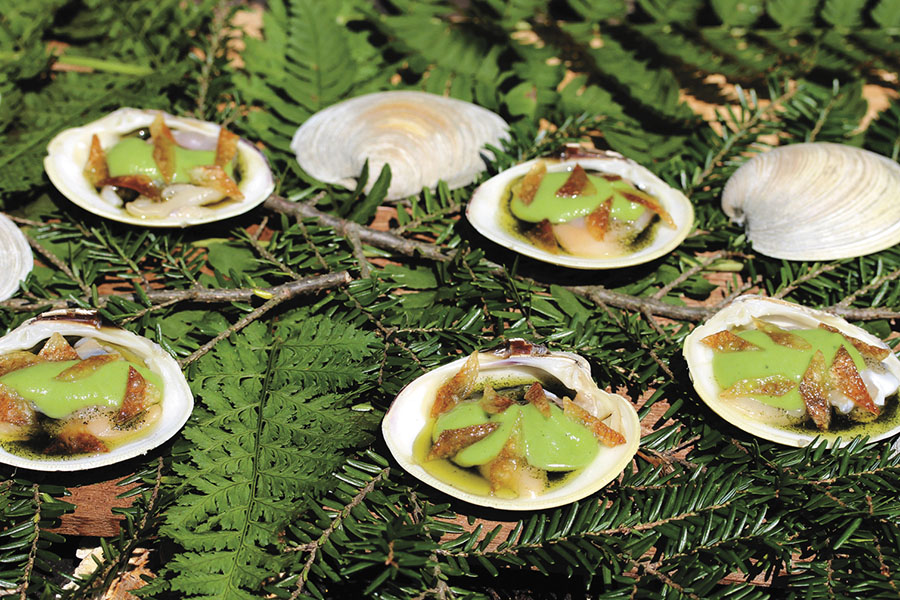
One such diner is Kevin Chan, a food aficionado who reviews restaurants on the website Fine Dining Explorer. Chan, who claims to have been the first person to have eaten at all of the World’s 50 Best Restaurants in 2012, received a call from a friend in November 2015, asking him to fly down to New York from Hong Kong for the weekend for a meal at Baehrel’s. “I thought my friend was out of his mind. Then, when I Googled the restaurant and saw how difficult it was to get a seat, I relented,” says Chan. That journey across half the world was time and money well spent, feels Chan, because the meal that lasted for seven hours and cost about $400 was better than many top-class restaurants in the world.
***
One of the reasons why Chan rates Baehrel’s food higher than several acclaimed restaurants is for the sheer labour that the chef invests in it. Right from opening the gates of his house to finally cleaning up, it’s just Baehrel and his crazy, labour-intensive processes. On a day he has guests coming in, Baehrel wakes up between 5 and 6 am, and wraps up around 1 in the night. And then, if there is a seating next day, he starts all over again—trawling through his food storage to take stock of the ingredients and draw up a unique menu, each dish featuring multiple artisanal components. For instance, he’ll soak Scottish salmon in concentrated sycamore sap for 43 days, then, while serving, warm it to room temperature, top it with a crisp of baked wild black burdock root, a paste of unripened green strawberries, pickerelweed seeds, homemade green strawberry vinegar, fresh pressed grape seed oil, and finally dust it with wild marsh marigolds.
On days he doesn’t hold seatings, Baehrel makes the flour, cheeses, tends to his bees, or tastes figs before he takes them in to protect them from the harsh New York winter. “The most time consuming,” he says, “is making the flour.” Preparing flour from cedar takes 16 to 18 months, and from acorn it takes a year to a year-and-a-half. “Sometimes, I think each loaf of bread I make should cost $500,” Baehrel laughs.
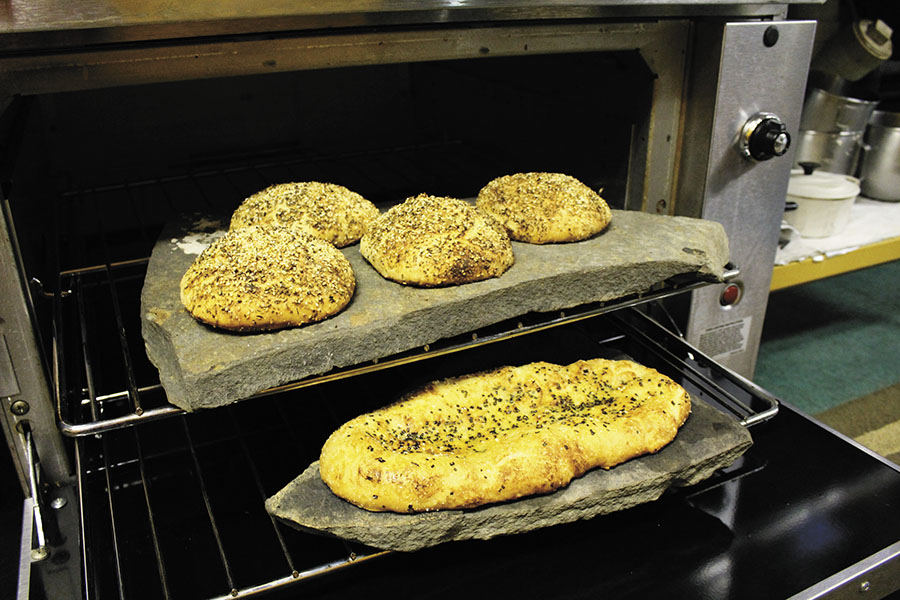
“Initially, we found it hard to believe that a single man could do the work that a restaurant does with at least 30 people. We asked him several questions to check, but he had precise answers for everything, right down to the specific details of how sweet a particular variety of carrot would taste in a particular month of the year,” says Chan.
Despite dabbling in ingredients that are offbeat and quirky—soaked lichen, daylily tubers—Baehrel knows he won’t go wrong with taste. “I am not a mad experimenter; I feel I know by now what’s going to work and what’s not,” he says. His confidence in his flavour profile has come from observing nature through the seasons and tasting every item that grows in his farm over and over again. He can pinpoint that one week in early April when moss has a bright green glow and tastes its best; or that pine needles make the soil acidic and barren.
Baehrel doesn’t read books or follow renowned chefs, but keeps referring to the philosophy with which he started cooking: To stay true to native American cuisine, to live off the land, just like his ancestors would have done. “The whole melting pot thing is great, and as a young chef I considered it. But it wasn’t something I was going to pursue in my cuisine. I wanted to go deeper into native American culture and use the people who occupied the land before us as an inspiration,” he says.
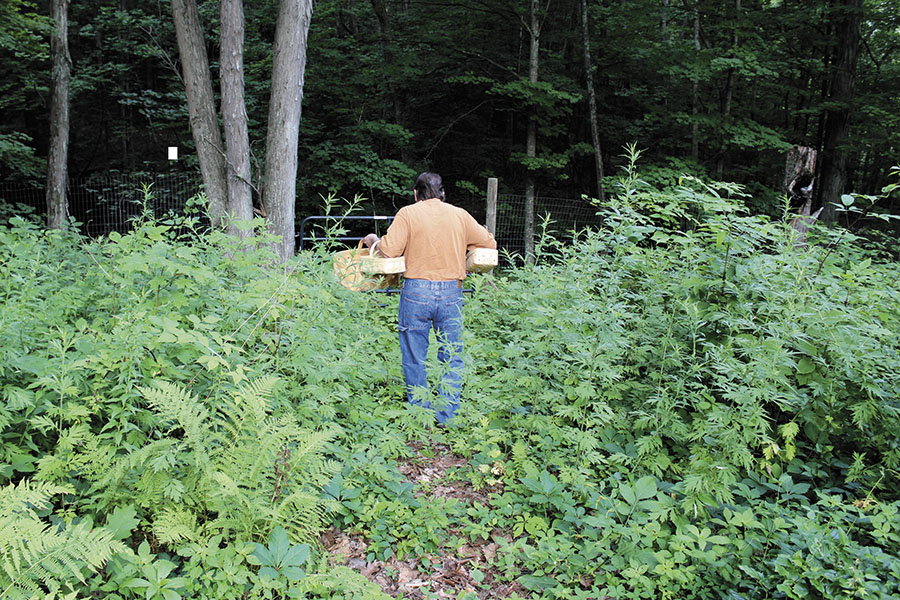
Staying true to such cooking traditions also means Baehrel has knocked out pans and other modern implements from his kitchen. Instead, he cooks on stones, wooden planks (he even serves on them), charcoal wood embers or, sometimes, right in the soil in which some of the ingredients were grown in, giving his flavours an unusual nuance. Cooking wild mustard root in the ground, for instance, adds a baked aroma to the dish.
What gives Baehrel the jitters is handling his ascending popularity. He says he doesn’t actively seek publicity or advertise on social media. He doesn’t even own a cellphone.
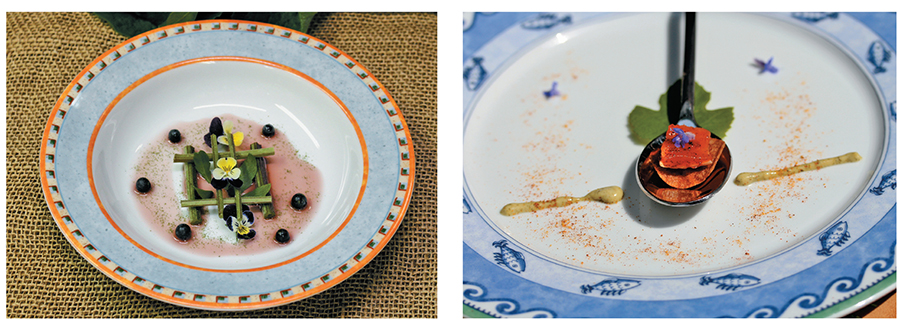
When he started the restaurant, he feared no one might show up. The footfalls started with old-fashioned word-of-mouth and are now spiralling into a thousand requests per year with media coverage.
It’s paying the bills, and Baehrel claims he is making a profit too—helped by the fact that he doesn’t take loans, has low living costs away from the city, and doesn’t have to pay for overheads and staff. But the surge of interest unnerves him sometimes. “I don’t know how many people I will be able to serve before I retire. We will always be fair and diplomatic while inviting guests; I don’t sell tickets or ask them to pay in advance,” he says.
But, for now, Baehrel is on a journey to discover. And he isn’t stopping anytime soon.
‘Produce is King, Not Techniques’
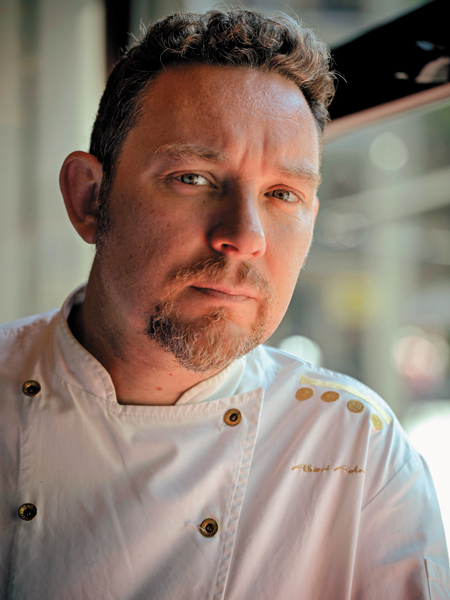
When Albert Adrià, 47, joined El Bulli (where older brother Ferran was head chef) in his mid-teens, he got what he calls the “worst job” in the kitchen: Churning ice-creams. He left the restaurant 23 years later, in 2008, with dishes like Wasabi Yogurt, Campari-soaked Cakes and Basil Air Waffles to his name, and the label of one of the best pastry chefs in the world. In 2015, he was named the best pastry chef at the World’s 50 Best Restaurants awards. Adrià has now returned to Barcelona, where he has set up six restaurants and is looking to turn the neighbourhood into the culinary capital of the world. Edited excerpts from an email interview:
Q. What is the inspiration behind the avant-garde food served at your six restaurants?
The starting point is always the same: The produce. Produce is king, not techniques. Our guide is the seasons of the year and the seasonal produce. In November, for instance, there’s truffle, artichokes, peas and sea urchin. All the teams in each restaurant know in advance that these products will be on the menu on their best season. That said, anything can inspire the creation of a new dish: Books, other restaurants that myself or the chefs visit, going to the market, and, of course, internet and other new platforms.
Q. What is the most challenging aspect of working with avant-garde cuisine?
When one does avant-garde food, one is breaking the status quo. That means you do things that people have never seen before and you challenge what is established. I’d say the most difficult aspect is to maintain the mental strength: On one side—now I am recollecting the times at El Bulli—when you do what no one does, you will be alone and this may give you vertigo. At El Bulli, Ferran knew how to lead the way. He knew how to accept the criticism of those who didn’t understand—by relativising it, and never giving up on dreams. On the other side, the challenge of creating techniques, improving ourselves, of meeting and exceeding expectations, the weight of being number 1—it requires a strength that exhausts.
Q. What is more important to you: The integrity of your tastes or the customer’s palate?
The customer is the supreme judge: If he doesn’t like it, he won’t be back and you will have to close, eventually. The final goal of a restaurant is to make the guest happy, not to please a chef’s ego. Therefore, if I see there’s a dish that doesn’t come back empty several times, then I choose to change it and understand what was it that guests didn’t like. It is not necessarily all about the flavour, it can also be the proportion, quantity or texture.
‘Question Certainties in the Kitchen, Overturn Them’
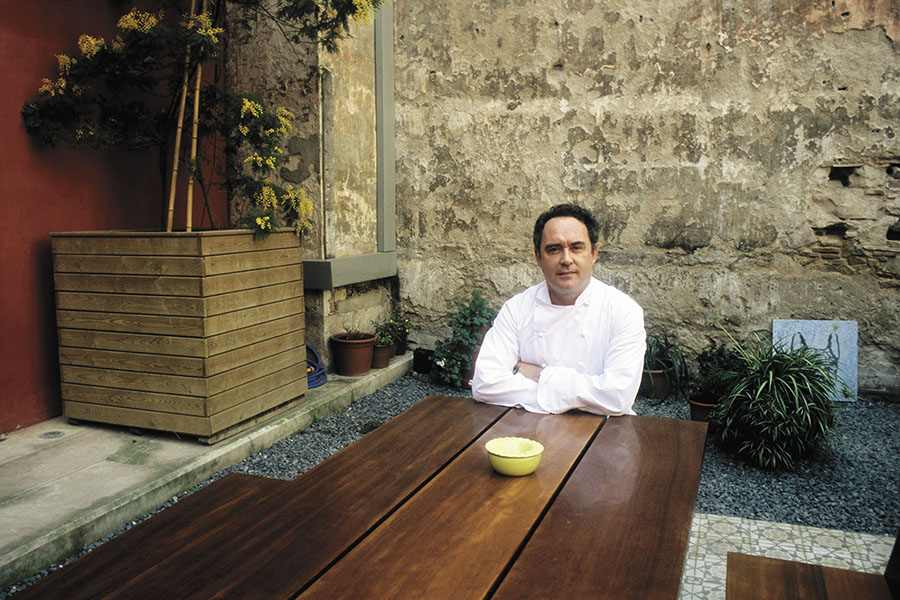
Ferran Adrià, 54, is considered the father of molecular gastronomy. Located on a hilltop overlooking the coast in Roses, a town north of Barcelona, Adrià’s restaurant El Bulli was regarded as the last word in culinary creativity. It was named the world’s best restaurant five times between 2002 and 2009. At its peak, El Bulli would get over a million reservation requests annually for its 8,000 seats. Adrià shut El Bulli in 2012 to set up a foundation that works on food innovation and a better understanding of the restaurant business. In an email interview, he tells Forbes India what exclusive food really is. Edited excerpts:
Q. From a dishwasher to one of the world’s most legendary chefs, what have been some of your most important lessons?
Never to take anything for granted, to question certainties and, if deemed appropriate, overturn them. We started from a tradition in cooking, from a history, but each element that forms part of the cooking process can be subject to reflection.
Q. You’ve been most well-known for science-induced creativity like spherification and foams. Where did you find the inspiration for these?
Each new technique has its own history, and the ones you mention are only a few among the many that we created over a period of 25 years. I believe what is most important is the “philosophical” approach, i.e., how to understand the kitchen, the commitment to freedom and above all, the willingness to take risks. In fact, the influence of science or technology in our kitchen is much less than is believed.
Q. What is the mental process of coming up with inventive food?
Since the late 1990s, the process that led from an idea to the preparation of a dish was very structured in El Bulli. We had a creative team that carried out these tasks in a workshop where, during six months of the year, they did not seek out specific recipes from specific ideas, but techniques and concepts that could lead to many recipes. This was the key, our system was not “an idea, a dish” but “many ideas, many dishes”. One of my most inventive dishes was the “vegetable stew in textures”, a preparation in 1994 in which many of the techniques and concepts created before—jellies, foams, salty slush, savoury sorbets—came together. It also was a commitment to a radical cuisine, in which the chef’s will to showcase his work dominated the diner’s taste
Q. Some say molecular gastronomy has run its course. Would you agree?
There is a misconception of what molecular gastronomy is. This name was initiated by scientists, not cooks, to explain what [chemical] reactions occur while cooking, and consequently, how they could improve some known techniques. Molecular gastronomy does not define a style of cooking, but a scientific search, so neither El Bulli nor any other avant garde restaurant has been able to carry it out. Foams, spheres and other techniques are part of the heritage of contemporary cuisine, but are neither indispensable nor can be defined by themselves.
Q. From where shall the future of culinary innovation emerge?
There has never been a generation as prepared as the current one. The multiplication of interesting influences and the adoption of the latest concepts by chefs from various parts of the world has introduced an interesting paradigm: The new vanguard may not come from France or Spain. It can arrive from China, Brazil, Peru, India, Japan or Australia.
(This story appears in the 20 January, 2017 issue of Forbes India. To visit our Archives, click here.)















